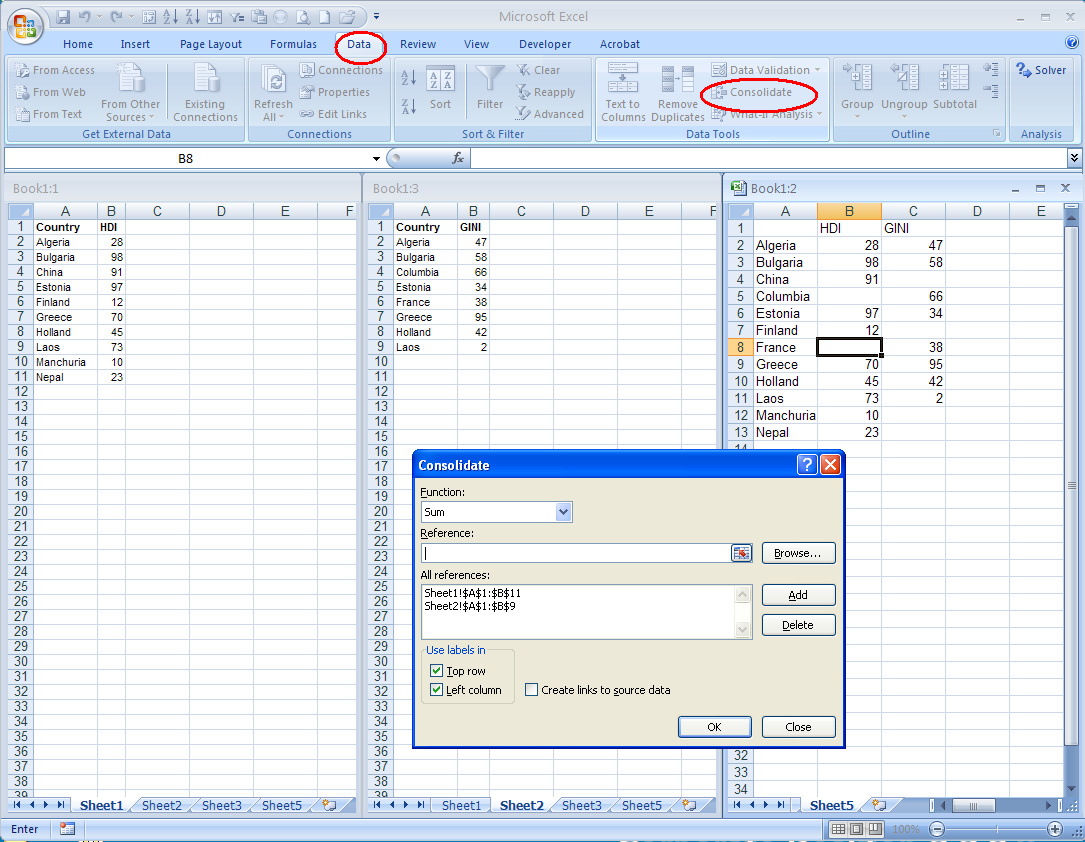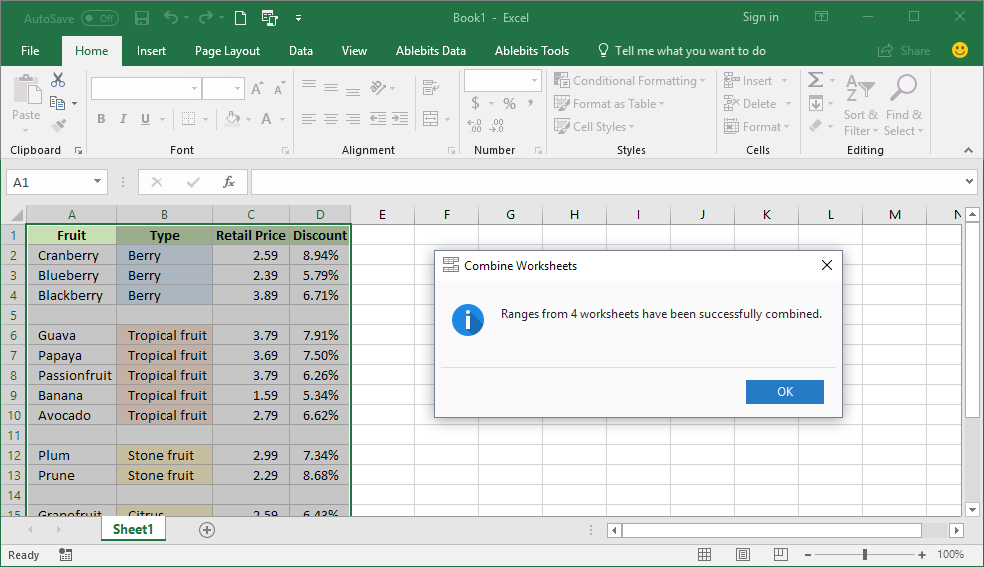5 Easy Ways to Merge Excel Sheets by Matching Values

Merging data from different Excel sheets often seems like a daunting task, particularly if you are dealing with large datasets. However, with the right techniques, this can be achieved efficiently, ensuring data accuracy and consistency. Here are five straightforward methods to merge Excel sheets by matching values, which will save you time and reduce the risk of errors.
1. Using VLOOKUP

VLOOKUP (Vertical Lookup) is a classic Excel function for merging data based on a common column. Here’s how to use it:
- Identify the key column: Choose the column that contains unique values for matching in both sheets.
- Write the formula:
=VLOOKUP(A2, [SheetName]!A2:B100, 2, FALSE)
- A2: The first cell in the key column of the first sheet.
- [SheetName]!A2:B100: The range in the second sheet where the data lookup is performed.
- 2: The column number in the lookup range from which to return a value.
- FALSE: For exact match lookups.
- Drag the formula down: Apply it to the rest of the data cells to complete the merge.
💡 Note: If you encounter #N/A errors, this might mean there's no corresponding value in the second sheet or the data format mismatch.
2. INDEX and MATCH

This method provides more flexibility and power than VLOOKUP, especially when you need to look up values leftward or match multiple criteria:
- Formula:
=INDEX([SheetName]!B2:B100, MATCH(A2, [SheetName]!A2:A100, 0))
- INDEX: Returns a value from the specified array.
- MATCH: Searches for a specified item in a range of cells, returning its relative position.
- Copy the formula: Drag or copy this formula down to apply it to all relevant rows.
3. Power Query

Power Query is a powerful tool in newer versions of Excel that simplifies data manipulation. Here’s how to use it for merging:
- Go to Data > Get Data > From File > From Workbook to load your Excel files.
- Select Merge Queries from the Home tab to combine the sheets based on common columns.
- Configure the merge settings, choosing the appropriate key columns for matching.
- Expand the merged query results to add the matched columns to your primary dataset.
⚠️ Note: Power Query is available in Excel 2016 and later versions.
4. Consolidate Function

Consolidate is useful when you want to combine data from several ranges or sheets:
- Select the cell where you want the consolidation to start.
- Go to Data > Consolidate.
- Choose the function (e.g., Sum or Average).
- Add the ranges from different sheets by specifying references to these ranges in the consolidate dialog.
- Check Top row or Left column if your data has labels for reference.
5. Using Macros

For more advanced users, writing a VBA (Visual Basic for Applications) macro can provide a customizable solution:
Sub MergeSheets() Dim ws1 As Worksheet, ws2 As Worksheet Dim lastRow As Long, i As Long'Set the sheets Set ws1 = ThisWorkbook.Sheets("Sheet1") Set ws2 = ThisWorkbook.Sheets("Sheet2") 'Find the last row with data in column A of Sheet1 lastRow = ws1.Cells(ws1.Rows.Count, "A").End(xlUp).Row 'Loop through each row and VLOOKUP For i = 2 To lastRow ws1.Cells(i, "B").Formula = "=VLOOKUP(A" & i & ", Sheet2!$A$2:$B$" & lastRow & ", 2, FALSE)" Next i 'Convert formulas to values ws1.Range("B2:B" & lastRow).Value = ws1.Range("B2:B" & lastRow).Value
End Sub
These methods offer different levels of complexity and utility, allowing you to choose based on your comfort with Excel and the specific requirements of your data merging task.
Considerations for Data Merging

- Data Consistency: Ensure that the columns used for matching are identically formatted in all sheets.
- Error Handling: Use error-handling functions like IFERROR in formulas to deal with unmatched values gracefully.
- Performance: For large datasets, methods like Power Query or Macros can be significantly faster.
By understanding and applying these methods, you'll be able to seamlessly combine data from different Excel sheets, ensuring your datasets are comprehensive and up-to-date. This not only streamlines your work but also guarantees the integrity of your data, an essential aspect of any business or research analysis.
What is the most straightforward method to merge Excel sheets?

+
VLOOKUP is often the most straightforward method due to its simplicity and widespread familiarity among Excel users.
Can I merge data from multiple sheets with Power Query?

+
Yes, Power Query allows you to load data from multiple files or sheets and merge them based on common columns or criteria.
What are the advantages of using a macro to merge Excel sheets?

+
Macros offer customization, automation, and can be more efficient for repetitive or complex merging tasks, although they require some VBA programming knowledge.
How do I handle errors when merging sheets using VLOOKUP?

+
You can wrap the VLOOKUP formula with the IFERROR function to handle errors gracefully, returning a default value or empty string if no match is found.
Is there a performance impact when merging large Excel datasets?

+
Yes, merging large datasets can be resource-intensive. Tools like Power Query or macros are recommended for such cases due to their ability to handle large volumes of data more efficiently than traditional formulas.



